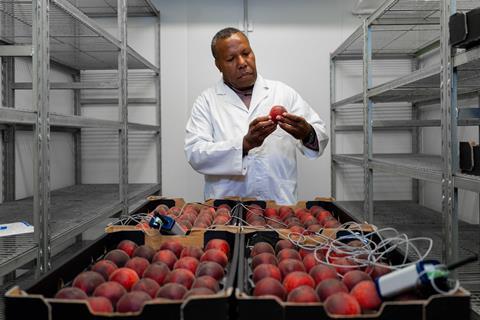Fresh and Secure Trade Alliance has launched more than 50 projects in the first 12 months

The Fresh and Secure Trade Alliance (Fasta) initiative has marked its first anniversary with significant strides toward safeguarding and expanding the nation’s horticulture exports.
This eight-year, A$130m programme, driven by Hort Innovation in collaboration with the Queensland Department of Agriculture and Fisheries (DAF), has launched more than 50 research activities focused on advanced pest management techniques and trade security – all with the long-term goal to bolster Australian exports.
A team of more than 80 collaborators, including industry groups, commercial operators, and researchers, has united under one programme to develop a range of pioneering strategies and new technologies for tracking pests, trapping pests and reducing pest pressure.
Currently, the work is across blueberries, avocados and strawberries and the breadth of the programme will grow over time as Australian horticulture identifies new opportunities that require the backing of science.
Hort Innovation chief executive officer Brett Fifield said the cornerstone of the programme remains the delivery of robust and timely data sets to underpin market access negotiation.
“The coordinated national approach we have introduced is critical to enhancing current markets and entering new ones, all based on solid science,” he said.
“We are not just repeating past practices; we are pioneering new, evidence-based strategies that will reassure our trading partners about the safety and quality of Australian produce.”
He said an unprecedented level of collaboration was central to the success of Fasta. “Collaboration is the key to achieving real results, and this united approach is already paying off.”
DAF horticulture and forestry sciences general manager Lynne Turner highlighted the program’s strong industry engagement.
“Over the past year, we have hosted five roundtables for nine key export commodities, held a research forum at Hort Connections, and three more roundtables are coming up. Our scientists have initiated more than 50 research activities directly aligned with industry needs and co-designed a work plan to guide our efforts. This important work is well underway,” she said.
Some of the key areas Fasta is working on include market access support, where it is addressing gaps in pest and disease data (phytosanitary requirements) critical for export market assurance and market access negotiation with existing and potential trade partners. This work will also include a focus on developing opportunities for blueberries and avocados.
In-field integrated pest management strategies are being developed for different regions and production systems, including protected cropping, to improve fruit quality and boost confidence in securing new markets. This work will include in-depth Mediterranean Fruit Fly research for blueberries and strawberries.
Fasta is looking at chemical alternatives such as introducing novel biopesticides and environmentally friendly chemicals to reduce reliance on traditional pesticides, ensuring efficient pest management.
In the area of stress physiology Fasta is investigating the mechanisms of insect death and associated physiological thresholds to optimise phytosanitary treatments and in-field management.
It is also working with smart technologies, particularly tools for rapid pest detection, tracking pest dispersion, and removing infested products from supply chains.
Surveillance and diagnostics projects aim to enhance biosecurity through advanced pest identification techniques, fine-scale genomic tracing, and by improving Australia’s capacity to prove its pest-free status to trading partners.
The Fasta programme is also tasked with capacity building and is developing a robust framework for mentorship, succession planning, and skill development among researchers, including the support a pool of PhD researchers, with a strong focus on industry collaboration.



